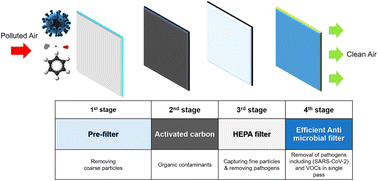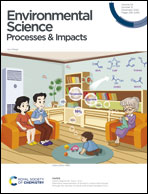SARS-CoV-2 airborne transmission: a review of risk factors and possible preventative measures using air purifiers
Abstract
The rapid spread of severe acute respiratory syndrome coronavirus 2 (SARS-CoV-2) and the resulting worldwide death toll have prompted worries regarding its transmission mechanisms. Direct, indirect, and droplet modes are the basic mechanisms of transmission. SARS-CoV-2 spreads by respiratory droplets (size range >10 μm size ranges), aerosols (5 μm), airborne, and particulate matter. The rapid transmission of SARS-CoV-2 is due to the involvement of tiny indoor air particulate matter (PM2.5), which functions as a vector. SARS-CoV-2 is more contagious in the indoor environment where particulate matter floats for a longer period and greater distances. Extended residence time in the environment raises the risk of SARS-CoV-2 entering the lower respiratory tract, which may cause serious infection and possibly death. To decrease viral transmission in the indoor environment, it is essential to catch and kill the SARS-CoV-2 virus and maintain virus-free air, which will significantly reduce viral exposure concerns. Therefore, effective air filters with anti-viral, anti-bacterial, and anti-air-pollutant characteristics are gaining popularity recently. It is essential to develop cost-effective materials based on nanoparticles and metal–organic frameworks in order to lower the risk of airborne transmission in developing countries. A diverse range of materials play an important role in the manufacturing of effective air filters. We have summarized in this review article the basic concepts of the transmission routes of SARS-CoV-2 virus and precautionary measures using air purifiers with efficient materials-based air filters for the indoor environment. The performance of air-filter materials, challenges and alternative approaches, and future perspectives are also presented. We believe that air purifiers fabricated with highly efficient materials can control various air pollutants and prevent upcoming pandemics.

- This article is part of the themed collections: Contaminant remediation and fate and Environmental Science – coronavirus research


 Please wait while we load your content...
Please wait while we load your content...